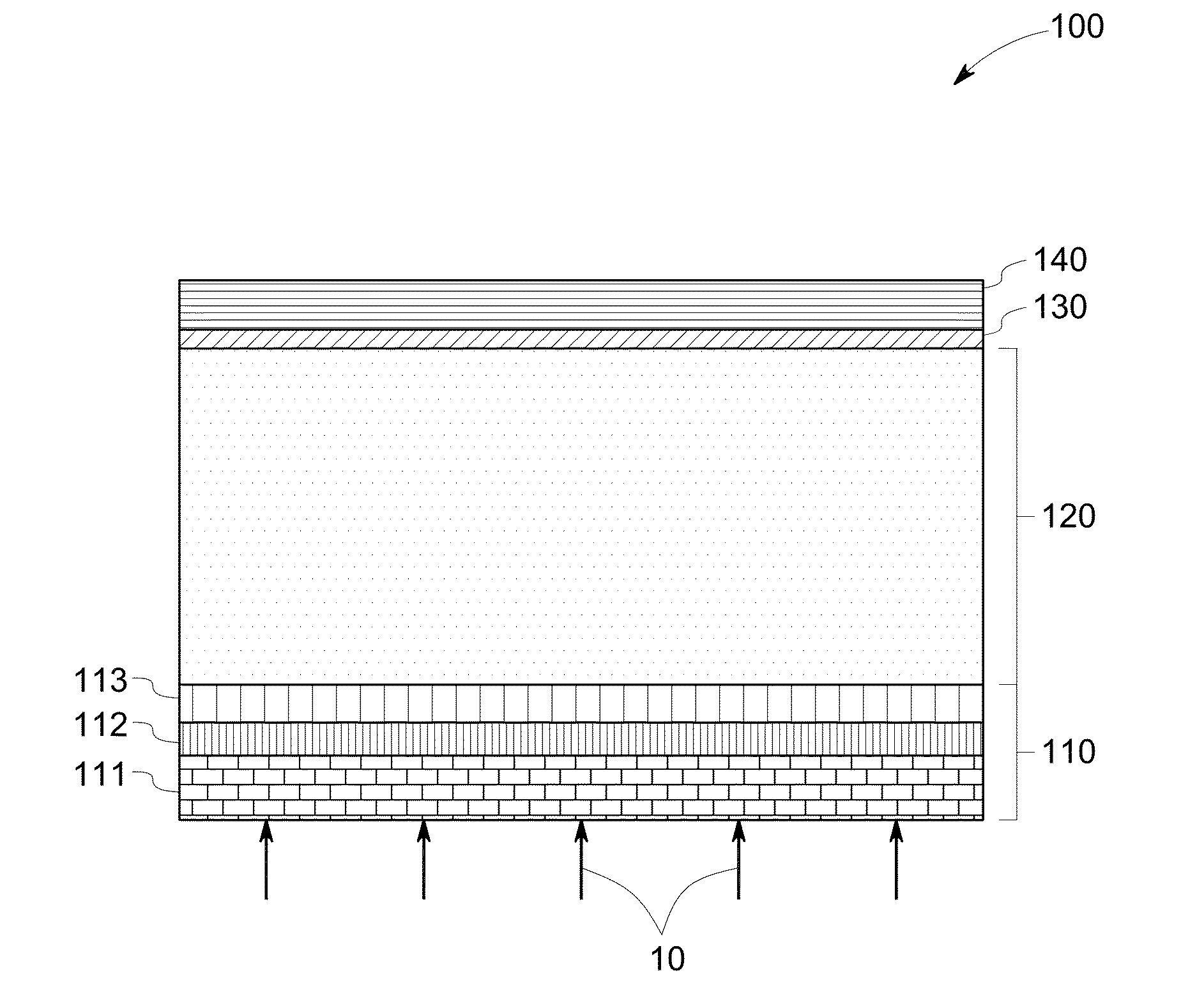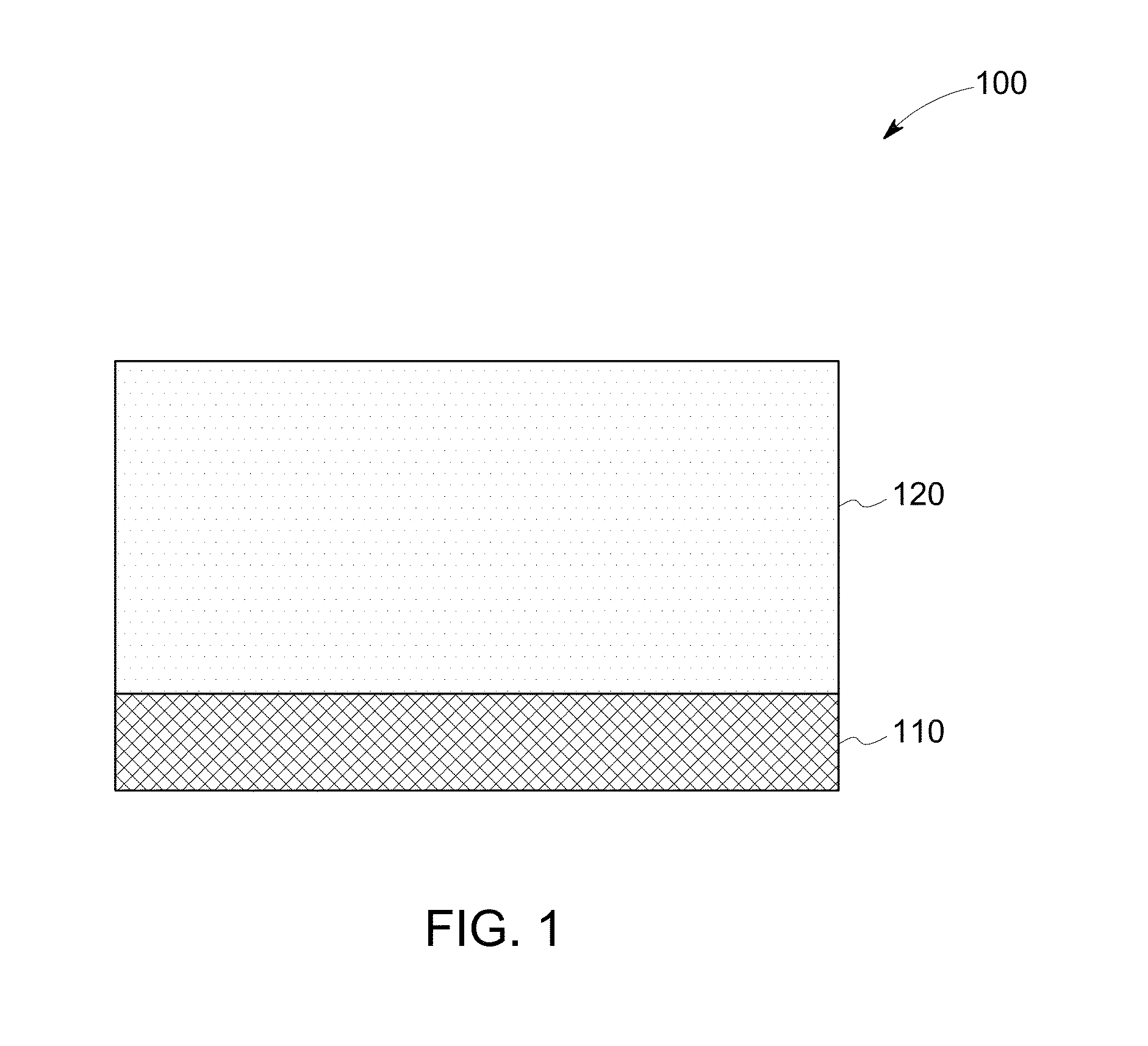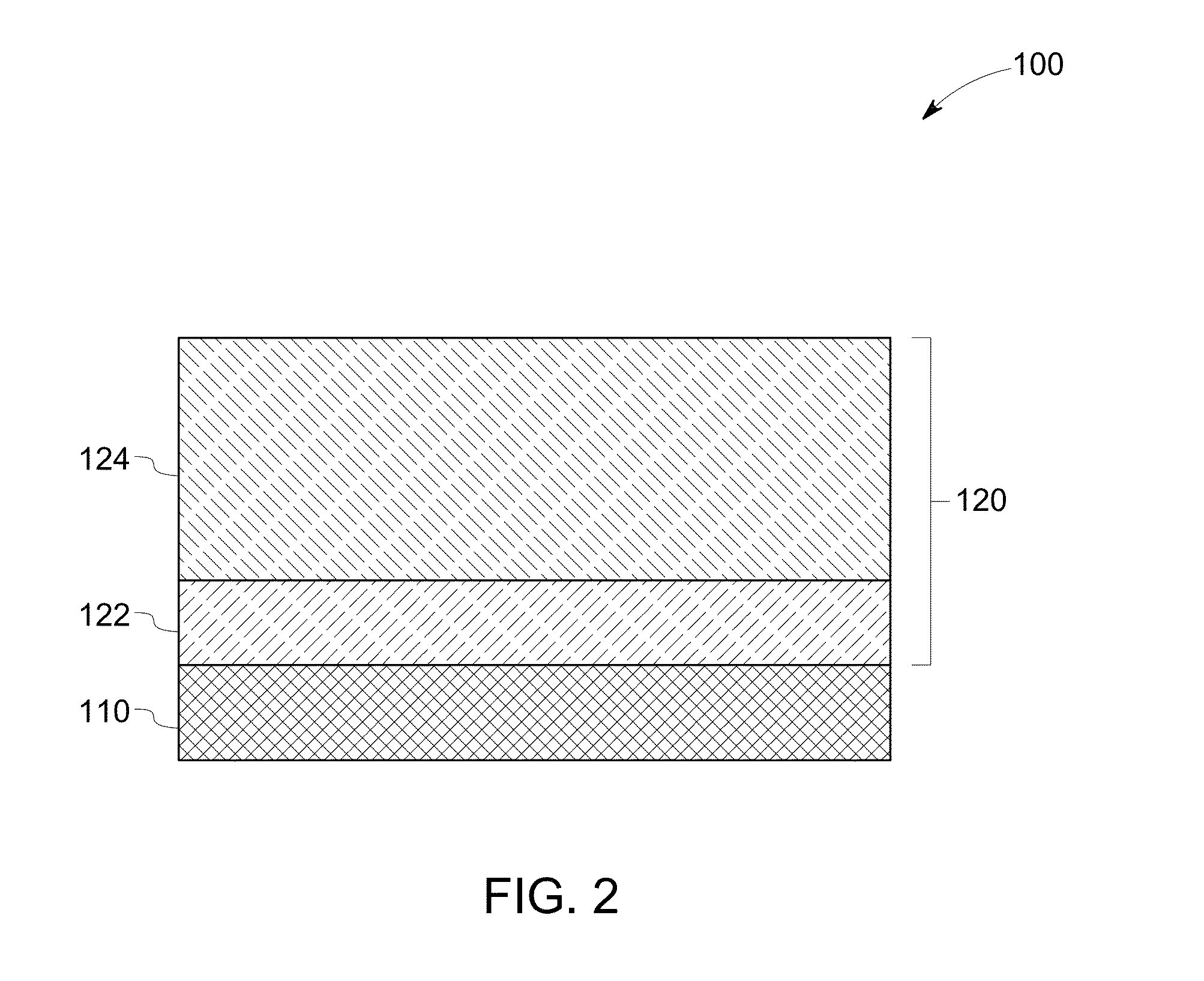Photovoltaic devices and method of making
a technology of photovoltaic devices and manufacturing methods, applied in the direction of sustainable manufacturing/processing, final product manufacturing, vacuum evaporation coating, etc., can solve the problems of high defect density at the interface, and low conversion efficiency of thin film solar cells
- Summary
- Abstract
- Description
- Claims
- Application Information
AI Technical Summary
Benefits of technology
Problems solved by technology
Method used
Image
Examples
example 1
Method of Manufacturing a Cadmium Telluride Photovoltaic Device Including a Graded CdTeSe Layer and No CdS Layer
[0098]The method of making the photovoltaic device was similar to the Comparative Example 2, except after the step of interlayer formation, a 120 to 140 nanometers thick CdSe layer was sputtered on the interlayer, followed by deposition of CdTe layer (band gap=1.5 eV) on the CdSe layer (band gap=1.74 eV), and back contact formation.
[0099]During device processing, the absorption edge of the composite CdSe / CdTe absorber appears to shift to energies that are lower than either pure CdTe or pure CdSe, as evidenced by a red shifted absorption edge as measured using wavelength dependence of the quantum efficiency (QE) of the solar cells (FIG. 12). This is consistent with extensive intermixing of the Te and Se within the absorber layer 120 thereby creating a lower band gap alloy. Further evidence of cadmium selenide telluride alloy formation is seen in photo-luminescence (PL) emis...
PUM
| Property | Measurement | Unit |
|---|---|---|
| thickness | aaaaa | aaaaa |
| wavelength | aaaaa | aaaaa |
| transparent | aaaaa | aaaaa |
Abstract
Description
Claims
Application Information
 Login to View More
Login to View More - R&D
- Intellectual Property
- Life Sciences
- Materials
- Tech Scout
- Unparalleled Data Quality
- Higher Quality Content
- 60% Fewer Hallucinations
Browse by: Latest US Patents, China's latest patents, Technical Efficacy Thesaurus, Application Domain, Technology Topic, Popular Technical Reports.
© 2025 PatSnap. All rights reserved.Legal|Privacy policy|Modern Slavery Act Transparency Statement|Sitemap|About US| Contact US: help@patsnap.com



